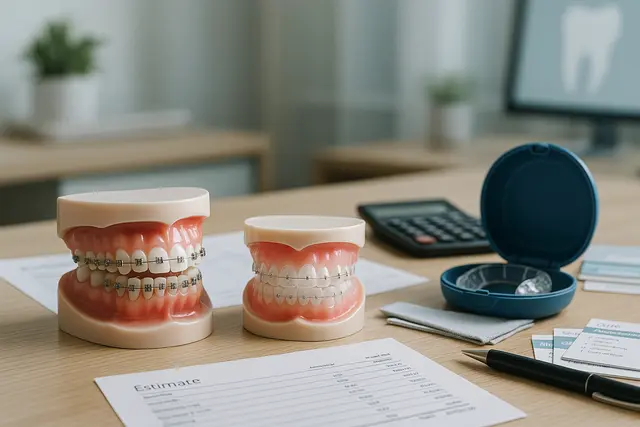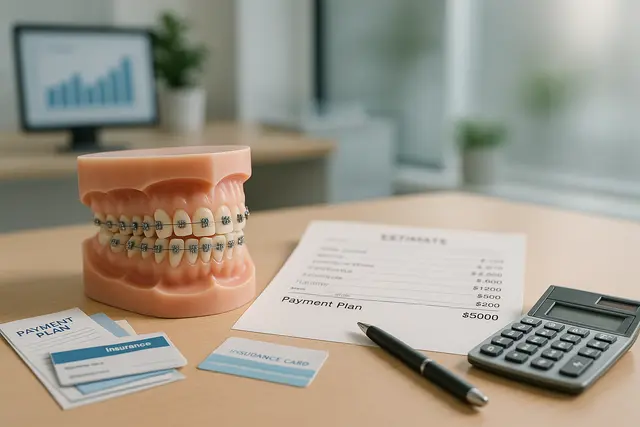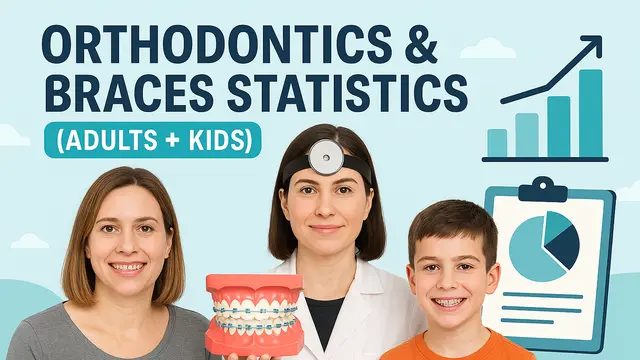Orthodontics
5 min read
Jun 02, 2025
Comparing the Most Popular Types of Hawley Retainers
You’ve finally finished braces, your smile looks amazing, and now your orthodontist hands you a retainer. Wait, what? Yep, keeping your teeth in their new place is just as important as getting them there. And when it comes to doing that job well, Hawley retainers are one of the most trusted options out there.

So, you finally made it through braces. Maybe it took 18 months, maybe it felt like 18 years. Either way, your teeth are straight, your smile’s solid, and your orthodontist is smiling like they just handed you a newborn. But wait, there’s a part two to this journey that’s just as important: the retainer.
Yep, your retainer keeps your teeth from moving back to their original position after all that hard work. Skip it, and your teeth can shift faster than a teenager’s mood. And while there are different types of retainers out there, Hawley retainers are among the most popular, with several variations depending on your needs. Let’s get into it.
What’s a Retainer, Anyway?
A retainer is a custom-made device that helps maintain teeth alignment after orthodontic treatment. Once your braces come off or your aligner trays are done doing their thing, your teeth are like rebellious teenagers, ready to sneak out of position the moment you're not looking. A good retainer prevents that from happening.
There are different types of retainers: removable, fixed retainers, and within that, different materials and designs. Some focus on patient comfort, some on durability, and some are just better for certain mouth shapes or conditions.
What Makes a Hawley Retainer So Popular?
The Hawley retainer is the OG of retainers. It’s been around a long time, and with good reason. These orthodontic retainers consist of a sturdy acrylic base that fits snugly against the roof of the mouth or along the inside of your lower teeth, with a thin metal wire (aka the labial wire) that runs across the front of your anterior teeth to hold them in place.
Why do people love them? First, they’re removable, which means you can take them out when you eat, brush, or just need a break. Second, Hawley retainers can easily be adjustable if your teeth have shifted slightly or need a small tweak without making a whole new one. Third, they last. With proper care, they can stick around for years.
Types of Hawley Retainers
Now let’s get into the fun part. There’s no single type of retainer when it comes to Hawley retainers. They’ve been customized in clever ways over the years to fit different needs and preferences.
1. Standard Hawley Retainer
This is your classic. The one you picture when someone says “retainer.” It has an acrylic material base, a labial bow (aka the metal wire across the front teeth), and clasps that anchor around the molars or cuspids.
It’s strong, easily adjustable, and ideal for keeping teeth in their new positions after braces. The downside? The wire is visible, which might not be everyone’s favorite look.
2. Wraparound Hawley Retainer
This version skips the molar clasps and instead wraps the labial wire around the back teeth. If you're sensitive to pressure on certain tooth positions, this design spreads out the support more evenly. It’s also great when the lower teeth need a bit more love.
It’s still removable, still adjustable, but tends to be a bit more durable, and sometimes a bit more expensive (yes, that might come with an additional charge).
3. Hawley with Clear Labial Bow
Here’s where function meets fashion. Instead of the traditional metal wire across the front of your teeth, this version uses a clear retainer bow made from a transparent plastic or polymer blend. It still holds the tooth position but looks a lot more discreet.
However, this type can be a bit more prone to wear and tear, and while it's more aesthetic, it’s not as strong as the metal version. You’ll want to wear a retainer regularly and take care of this one gently.
4. Spring Hawley Retainer
When teeth have shifted slightly post-treatment, but not enough to justify full-on braces again, the spring Hawley steps in. This type of retainer includes small springs added to the design to help guide tooth movement back into the corrected positions.
Think of it as your orthodontist’s “just in case” backup plan for preventing relapse without going full metal jacket.
The Benefits of Removable Retainers
Being able to remove your retainer makes eating, flossing, and speaking a whole lot easier. Unlike permanent retainers (aka bonded retainers that are attached to the back of your teeth), removable retainers give you full control. Just don’t abuse the power.
The catch? Patient compliance. If people don’t wear their retainer, they’re opening the door for unwanted movement, which can lead to relapse or even malocclusion. So yes, your orthodontist means it when they say wearing your retainer is for the rest of your life. Or at least for a few nights a week, forever.
Your Orthodontist Knows Best
If you’re unsure what kind of retainer to fit, always talk to your orthodontist. They know your case, your teeth, and what kind of material or structure will hold up best over time.
Whether it’s a Hawley retainer, a clear retainer, or fixed retainers, your orthodontist may recommend what will help your teeth stay in line with minimal fuss. If your retainer is ever lost or broken, get a replacement ASAP before your teeth shift. Waiting even a few weeks can set things back.
Hawley vs Other Options
Let’s not pretend Hawley retainers are the only game in town. Essix retainers, those super clear, snug-fitting trays, are popular for being virtually invisible. But they can warp with hot drinks and are less durable long-term.
Fixed retainers, also known as bonded retainers, are glued behind your anterior teeth and keep them from drifting. You don’t have to remember to wear them, which is great. But they’re harder to clean around and can break without you realizing it.
Every type of retainer has its pros and cons. But Hawley retainers are often the most flexible, forgiving, and long-lasting, especially when the goal is to maintain teeth alignment with minimal drama.
Taking Care of Your Retainer
No matter which teeth retainer you go with, cleaning it is non-negotiable. Use a soft toothbrush (no toothpaste, unless your dentist says otherwise), and rinse it with lukewarm, not hot, water. Store it in a protective case and keep it away from pets (dogs love chewing them, weirdly enough).
And don’t forget about oral health. Even the best retainer can’t fix what poor hygiene messes up. So brush, floss, rinse, and wear that retainer like the investment it is.
Final Thoughts
Getting through orthodontic treatment is an achievement. But that final step, choosing and wearing your retainer, is what decides if your smile stays Instagram-worthy or quietly retreats to its original crooked glory.
So whether you’re weighing the benefits of a Hawley retainer, figuring out which labial bow suits your vibe, or just trying not to forget it in your lunch bag every day, know this: the right retainer keeps your teeth in check, protects your hard-earned results, and gives you peace of mind.
And if you’re not sure where to start, or you’re curious to learn more about Hawley retainers, just schedule a visit. Let your orthodontist guide you, because no one wants to straighten teeth twice.
What Is a Hawley Retainer and How Does It Work?
A Hawley retainer is a removable device made of an acrylic base and a metal wire that fits across the front of your teeth. It’s custom-made to help keep your teeth in their new, straight position after braces. The wire holds the teeth in place while the base supports the retainer’s fit against your mouth. It’s adjustable, durable, and built to last with proper care.
How Is a Hawley Retainer Different From Other Retainers?
Unlike clear Essix retainers or bonded permanent retainers, Hawley retainers are designed for long-term durability and adjustability. You can take them out to eat or clean, and they can be fine-tuned if your teeth begin to shift slightly. They’re more visible due to the metal wire, but they’re also easier to repair and less likely to warp.
Do I Really Have To Wear a Retainer Forever?
Yes, at least part-time. Your orthodontist may initially recommend full-time wear, but most people transition to wearing their retainer only at night. Without it, your teeth can slowly shift back, undoing all that orthodontic progress. Lifelong retainer wear is key to maintaining a straight, healthy smile.
What Should I Do If My Retainer Breaks or No Longer Fits?
Contact your orthodontist right away. Even a short delay can cause your teeth to move. Depending on the issue, they may adjust your current retainer or create a new one. Never try to fix a broken retainer at home, it could damage your teeth or make the problem worse.
Read Next
Related Posts

Orthodontics
Retainer That Looks like Braces: Benefits for Long-Term Alignment
A retainer might not get as much attention as braces, but it plays a crucial role in maintaining your smile after orthodontic treatment. Whether you're new to retainers or curious about the type that looks like braces, understanding their purpose and benefits is key to keeping your teeth aligned for the long haul.
6 min read
Sep 15, 2025

Orthodontics
How Much Are Metal Braces? Cost Comparison With Other Options
Thinking about getting braces but overwhelmed by the cost? You’re not alone. Orthodontic treatment can be a major investment, and understanding the different price points, from metal braces to clear aligners, can help you make a smart, confident decision.
5 min read
Sep 15, 2025

Orthodontics
Orthodontics & Braces Statistics (Adults + Kids)
Orthodontics has transformed from a niche medical service for teenagers into a booming sector that spans all ages. Today, both adults and children seek orthodontic treatment to improve their smiles, fix bite issues, and boost self-confidence.
4 min read
Aug 21, 2025
Don’t have time to research every dentist around you?
See why 30k+ patients trusted us